Sleeping out under the stars should be a magical experience. Whether you’re a seasoned trekker heading out for a high-altitude adventure or a novice camper taking your first steps into the wilderness, you need a good night’s sleep. The wrong sleeping bag can leave you too warm to sleep or make you wake up in the early hours of the morning wishing you had another blanket to throw on.
With so many sleeping bags to choose from, you might find buying the right one daunting. There are so many shapes and sizes to choose from — not to mention price tags — that you may not even know where to start. This guide will demystify the sleeping bag, explain comfort ratings, help you separate your seasons, and explain why you might have a reason to care which side your zip is on.
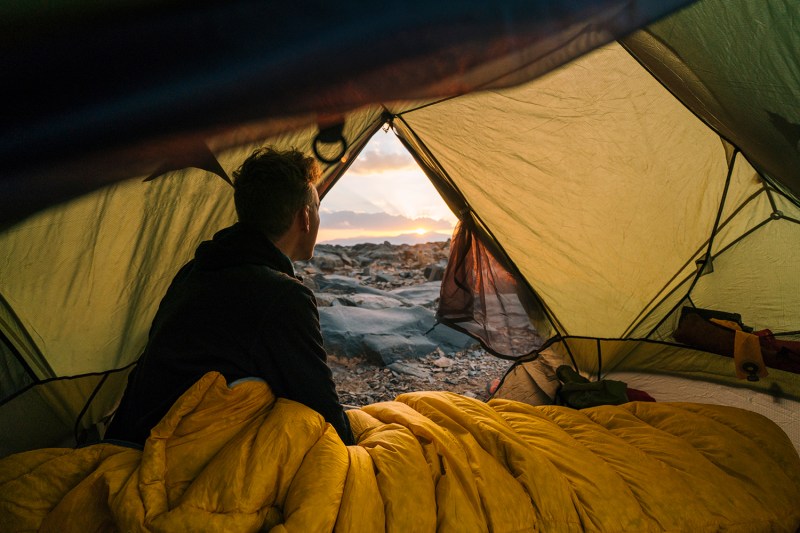
Seasons
The first piece of advice most people will give you about sleeping bags is to determine the number of seasons you need. But what do the different seasons mean?
Two-season sleeping bags are designed for summer camping, as well as the warmer ends of spring and fall. Don’t get lulled into thinking that spring nights are necessarily warm; they can be some of the coolest nights of the year. These bags are usually rated at 32 degrees Fahrenheit+.
Three-season sleeping bags are rated from 20 degrees Farhenhiet+ and are suitable from spring through fall. Most people who only own one sleeping bag will buy a three-season sleeping bag, as they tend to represent the best warmth-to-weight ratio.
Four-season sleeping bags are designed for extreme winter camping trips and high-altitude expeditions. These sleeping bags are designed for conditions where temperatures drop below 20 degrees Fahrenheit, though the specific rating varies between bags.
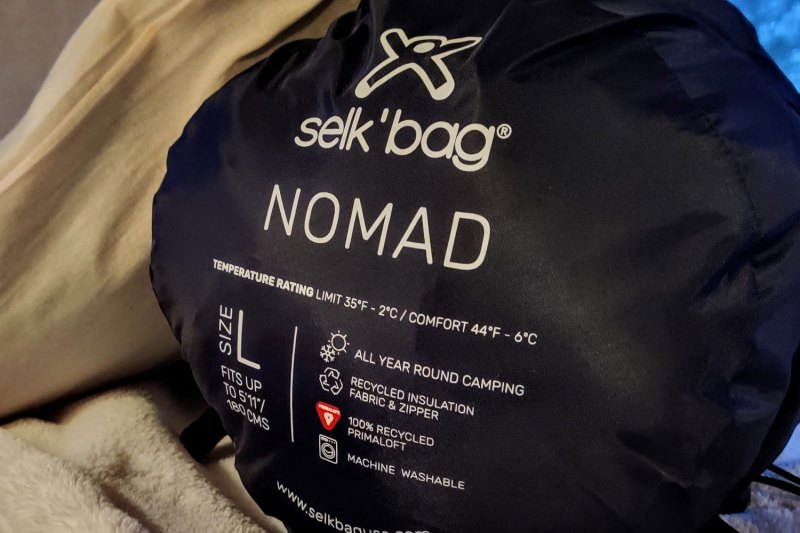
Temperature Ratings
Sleeping bags tend to have three temperature ratings: comfort, limit, and extreme. These ratings are a guide based on the average U.S. adult male, so you may have to account for your own body and how warm or cold you sleep usually. Companies work these ratings out with the assumption you will use a sleeping pad, an essential item for a warm night’s sleep.
The comfort rating is the optimal temperature for your sleeping bag. This rating should be used as your guideline when buying your sleeping bag. Aim for the comfort rating being your standard camping temperature.
The limit rating of a sleeping bag is the lowest temperature at which the average adult male will be able to sleep through the night. You may not wake up because of the cold, but you will most likely feel cold when you do wake up. This rating is useful for planning camping trips in spring or fall.
The extreme rating is not one you want to explore too closely. This is the absolute limit of your sleeping bag for survival situations. The extreme rating is the temperature at which your sleeping bag will keep the average man alive for six hours without risk of death from hypothermia.
When you’re starting out, it’s always best to be a little more cautious when planning and assume it will be 5 to 10 degrees cooler than the forecast suggests. Sure, being too warm isn’t comfortable, but you can always unzip a little; it’s better than shivering through the night or waking up cold.
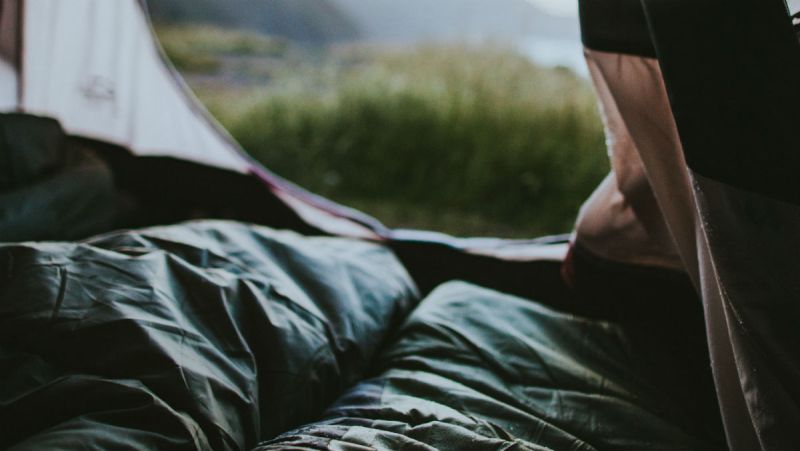
Fill
Sleeping bags are filled with insulation to trap your body heat and create a barrier between you and the cool outside air. This insulation is usually either down feathers or synthetic fibers.
Down fill offers a greater warmth-to-weight ratio, so most trekkers prefer a down sleeping bag. These bags are lighter than synthetic sleeping bags and pack down smaller, giving you more space in your pack. This is because down has a higher fill power than synthetic materials. Fill power is a test of how much the down can loft.
Synthetic bags use polyester fibers instead of down feathers for their insulation. These fibers require more space to achieve the same level of insulation, so synthetic sleeping bags tend to be bulkier than those insulated with down feathers. The key advantage that synthetic sleeping bags have is their ability to retain their warmth even after being soaked. With DWR (durable water repellant) coating, down is slowly catching up, but for camping in wet conditions or where you’re exposed, synthetic bags still have the edge.
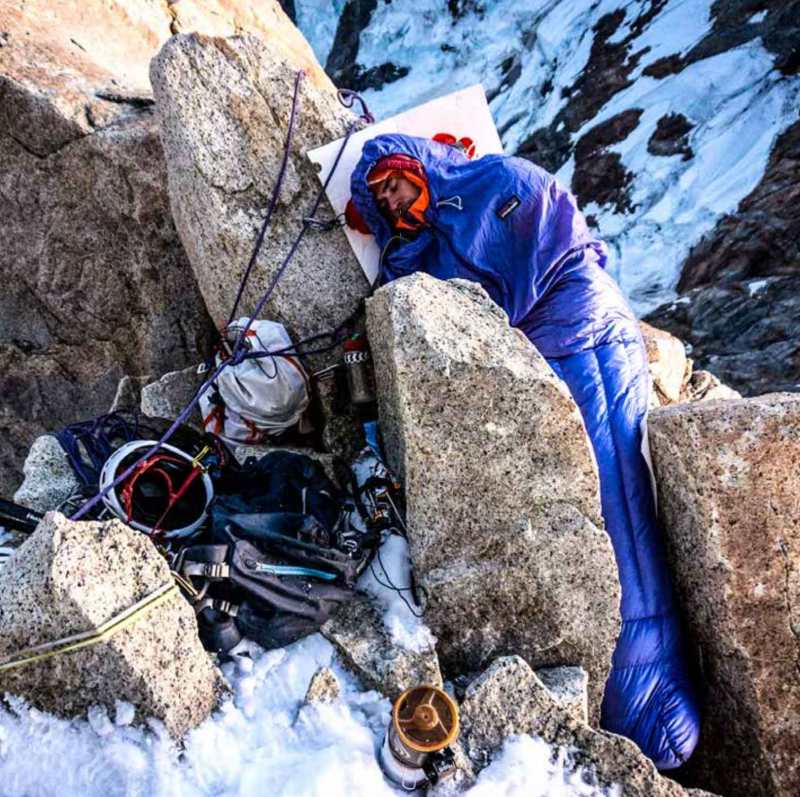
Shape
Sleeping bags come in either square or mummy shapes. Square sleeping bags, due to their limited technical qualities and excessive bulk, are more commonly used by campers who only head out in warm weather and car camp. They are far less restrictive than mummy bags, and they feel a lot more like you’re sleeping at home in your own bed rather than in a sleeping bag.
Most technical sleeping bags are a mummy fit, shaped to fit close to your body. This cuts down on excess fabric and insulation, saving weight and bulk in your pack. Mummy sleeping bags are warmer than square bags, with the form-hugging design reducing the quantity of air around you. It can take some time to get used to mummy sleeping bags, as they may feel restrictive at first or challenging to get in and out of — especially if nature calls at night!
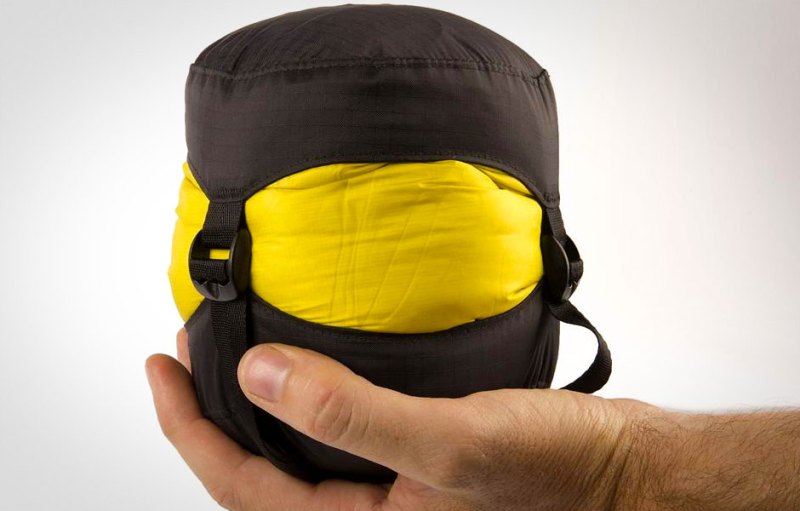
Size
There are two sizes to a sleeping bag: There’s the packed size and then there’s the length. Most sleeping bags come in a standard size (suitable for people up to 6 feet tall) and a long length (suitable for people up to 6 feet 6 inches tall). Some companies also sell short sleeping bags that fit up to 5 feet 6 inches. Shorter sleeping bags use less material and are lighter to carry, but it’s important to make sure you have enough space. You want to be comfortable in your sleeping bag and have some space around your feet; otherwise, there is no air to heat up and you will wake up with cold feet in the morning.
Pack size matters if you’re going to be carrying your sleeping bag on a trek. Put plainly, the smaller your sleeping bag, the easier it is to fit into your bag. There are sleeping bags that pack down to around the size of your water bottle, but these are usually rated for warm temperatures and come with a high price tag. We would all love an ultra light, ultra small sleeping bag, but you can usually find balance with a mid-size bag instead. Try to avoid your sleeping bag taking up your entire pack, though.
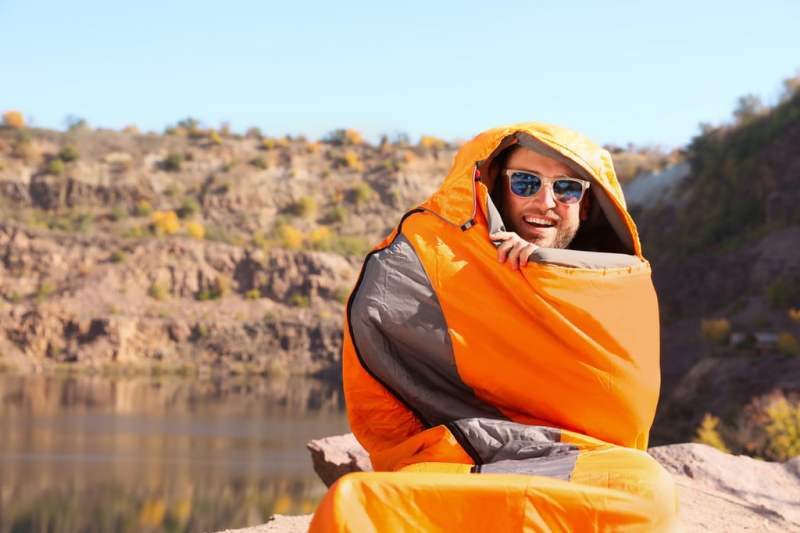
Hood
Although the myth that we lose 50% of our body heat through our heads has been debunked, we do still probably lose around 10% of our body heat through our heads. If you wake up in the night feeling cold, you could reach for your hat. Alternatively, you could pull the cord on your sleeping bag and pull the hood in close around you to retain that 10% of your heat. Just make sure you keep your face pointing outward so you can breathe easily.
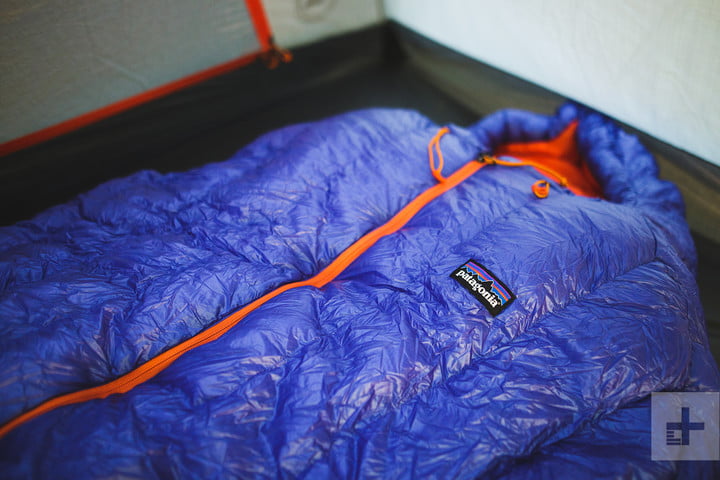
Zip
We said we would get to the zip. It might seem bizarre that you can choose which side of your sleeping bag your zip is on, but there is a good reason for doing so. Unless your mummy sleeping bag has an unusually large opening, most people choose to unzip it slightly to climb in and out. By putting your zip on the opposite side to your dominant hand, you’ll make it easier to reach over and zip, or unzip, your sleeping bag. So if you’re right-handed, you’ll want your zip on your left side; if you’re a leftie, you’ll want the zip on your right side.
To make getting in and out of your bag even easier, make sure your chosen sleeping bag has a snag-free zipper on it. The smaller your zip, the more difficult it usually is to zip and unzip your sleeping bag. If you plan to camp in cold weather, make sure there is a baffle behind the zip to act as a draft excluder to stop any cold air from coming through the teeth.
You can also zip sleeping bags together. Sure, double sleeping bags are great if you always camp with your partner, but if you buy two sleeping bags with opposing zips, you can zip your bags together and create your own.
Editors' Recommendations
- The secret to a successful hike? Choosing the right hiking underwear
- Better understand mountain bike categories before you buy: Your complete guide
- How to pack a tent in a backpack: A pro guide for beginners in 6 easy steps
- Layer up or strip off? What’s the right way to sleep in a sleeping bag?
- The unsung hero of the camping setup: Why your sleeping bag liner is essential




